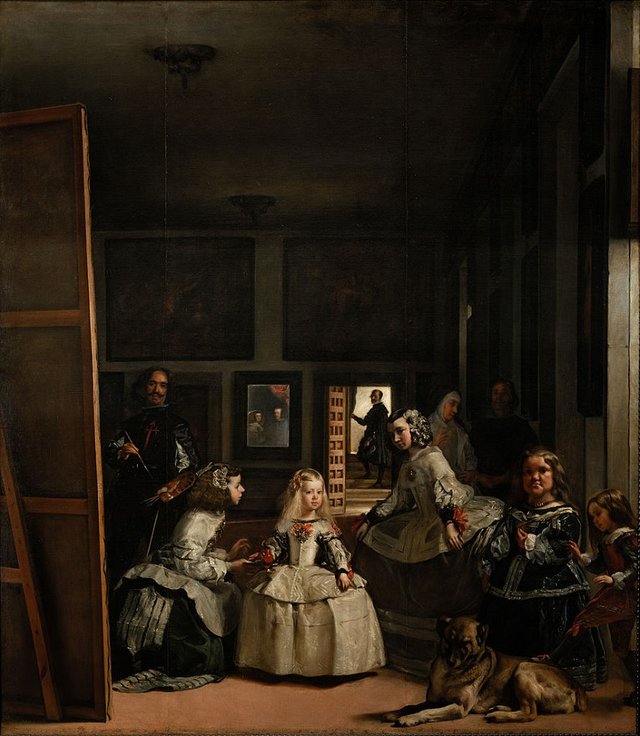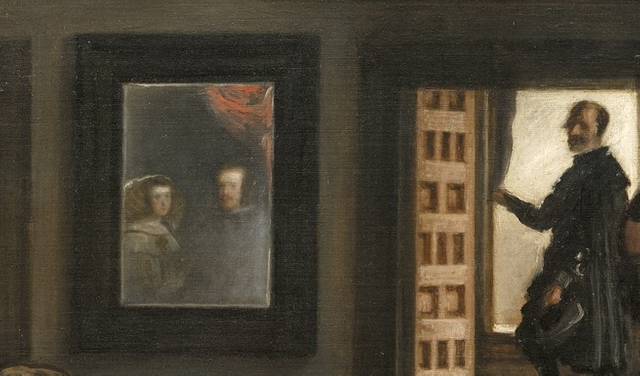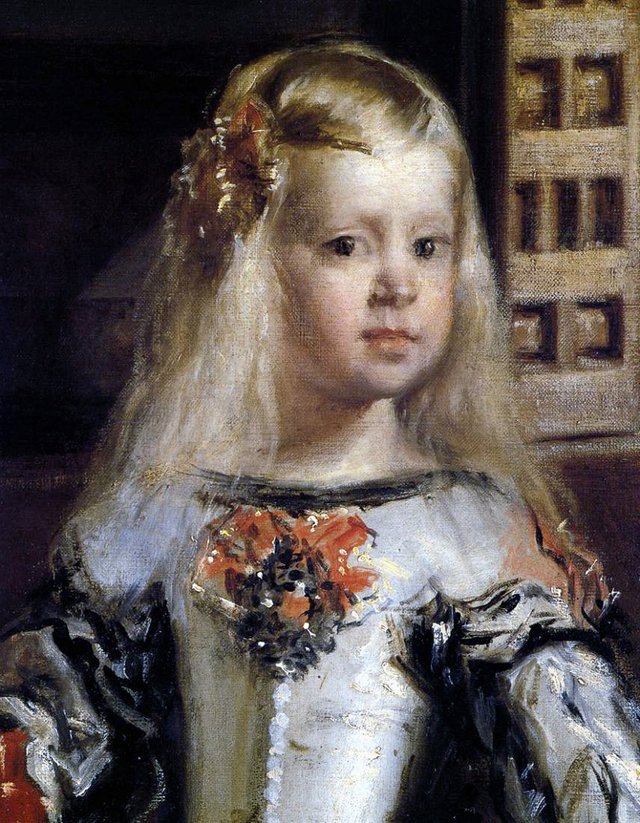[ART HISTORY] The World's First Meta Painting? 🎨
Velázquez's painting from 1656 is one of the central works of Western art history and is exciting on many levels. What is really going on in this painting? Who is the main character? Let's pause for a few minutes and have a closer look at it.

In the painting Las Meninas (The Ladies-in-Waiting) by Diego Velázquez, we are regarding a sequence of events. This is by no means a static image. A snapshot of the artists choosing has been captured for eternity - some people have temporarily gathered in a room in the painter's studio. One the surface it's an interior with nine people and a dog. At the center of our view is the young Infanta, Margaret Theresa, the little princess, who is surrounded by her maids. One of them looks at her from a kneeling position and the other looks at the viewer, ie towards us. It's a mysterious picture. The light falls on the Infanta. In the room there is also a female and a male dwarf, a drowsy mastiff, a chaperone and a bodyguard.
In the left corner an artist stands in front of a giant canvas. He has a brush in his right hand and appears to be in the middle of studying or painting something. What, who and how are questions that arise as we regard the painting.
Is the artist Velázquez? Has he painted himself? Is it Velázquez that is regarding and depicting us on his canvas? We can only see the back of the big canvas, so we can't see what is depicted on it. But it's clear that his intention is to paint what is standing where we are currently standing. With this feature, Velázquez describes three rooms; one where the Infanta stands with the maids, another room which is depicted on the canvas that is turned away from us, and a third room which is the one we and they who once were depicted stand in. Four rooms if we're counting the one behind the open door in the very back of the painting. In the doorway stands the queen's chamberlain. It's an exciting game of who's regarding who.

We can also spot a mirror in the back of the painting. It's no coincidence that it's placed in the middle of the painting. It's actually a key part of the composition. In the mirror we can faintly discern a couple. Could it be the royal couple? And is it the same couple that is being depicted on the large canvas? I would say that it is. Their position certainly coincides with the spectator of the painting.
Just as the painter is about to dip his brush in the fresh paint of the palette, the infanta enters the room with her entire entourage and so interrupts him. She was the favorite child of king Philip IV, so I'm sure he didn't mind. The painting is what the king sees and what we see with his eyes - and yet not.
In this way, the painting extends beyond the canvas and outside time. This painting has been called Western Europe's most philosophical painting, and in the end there are eleven people portrayed in this painting, or perhaps twelve if you count yourself. Viewing it in its current location in the Prado museum in Madrid is certainly something that is on my bucket list.

The American artist Eve Sussman has brought this moment to life with a steady-cam and actors. Sussman isn't interpreting what the image represents. Instead, her film is a commentary on how the Spanish master worked, how he created a picture with a suggestive force as if I would be right there. Thus, she also formulates a general statement about the conditions of art and vision. I highly recommend watching the little snippet from her work below.

great post
i will follow your account to see how are you doing;) please follow me
thanks, followed back
Good to read. thanks for sharing.
i do pebble art only. check my profile maybe you will like it.